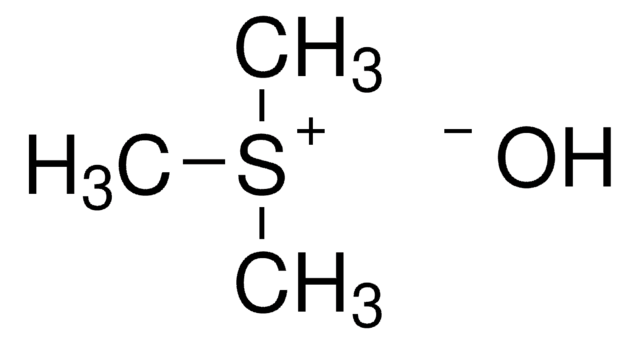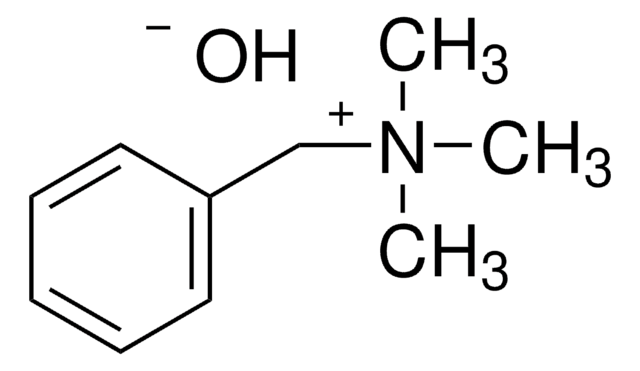79266
Trimethylphenylammonium hydroxide solution
~0.5 M (CH3)3N(OH)C6H5 in methanol, for GC derivatization, LiChropur™
Synonim(y):
Phenyltrimethylammonium hydroxide, TMAH
About This Item
Polecane produkty
klasa czystości
for GC derivatization
Poziom jakości
Postać
liquid
jakość
LiChropur™
przydatność reakcji
reagent type: derivatization reagent
reaction type: Esterifications
stężenie
~0.5 M (CH3)3N(OH)C6H5 in methanol
metody
gas chromatography (GC): suitable
zanieczyszczenia
≤0.2% halides (as chloride)
temp. przechowywania
2-8°C
ciąg SMILES
[OH-].C[N+](C)(C)c1ccccc1
InChI
1S/C9H14N.H2O/c1-10(2,3)9-7-5-4-6-8-9;/h4-8H,1-3H3;1H2/q+1;/p-1
Klucz InChI
HADKRTWCOYPCPH-UHFFFAOYSA-M
Szukasz podobnych produktów? Odwiedź Przewodnik dotyczący porównywania produktów
Powiązane kategorie
Opis ogólny
Zastosowanie
Inne uwagi
Informacje prawne
Hasło ostrzegawcze
Danger
Zwroty wskazujące rodzaj zagrożenia
Zwroty wskazujące środki ostrożności
Klasyfikacja zagrożeń
Acute Tox. 3 Dermal - Acute Tox. 3 Inhalation - Acute Tox. 3 Oral - Eye Dam. 1 - Flam. Liq. 2 - Skin Corr. 1B - STOT SE 1
Organy docelowe
Eyes
Kod klasy składowania
3 - Flammable liquids
Klasa zagrożenia wodnego (WGK)
WGK 3
Temperatura zapłonu (°F)
51.8 °F - closed cup
Temperatura zapłonu (°C)
11 °C - closed cup
Środki ochrony indywidualnej
Faceshields, Gloves, Goggles
Choose from one of the most recent versions:
Masz już ten produkt?
Dokumenty związane z niedawno zakupionymi produktami zostały zamieszczone w Bibliotece dokumentów.
Klienci oglądali również te produkty
Nasz zespół naukowców ma doświadczenie we wszystkich obszarach badań, w tym w naukach przyrodniczych, materiałoznawstwie, syntezie chemicznej, chromatografii, analityce i wielu innych dziedzinach.
Skontaktuj się z zespołem ds. pomocy technicznej
















